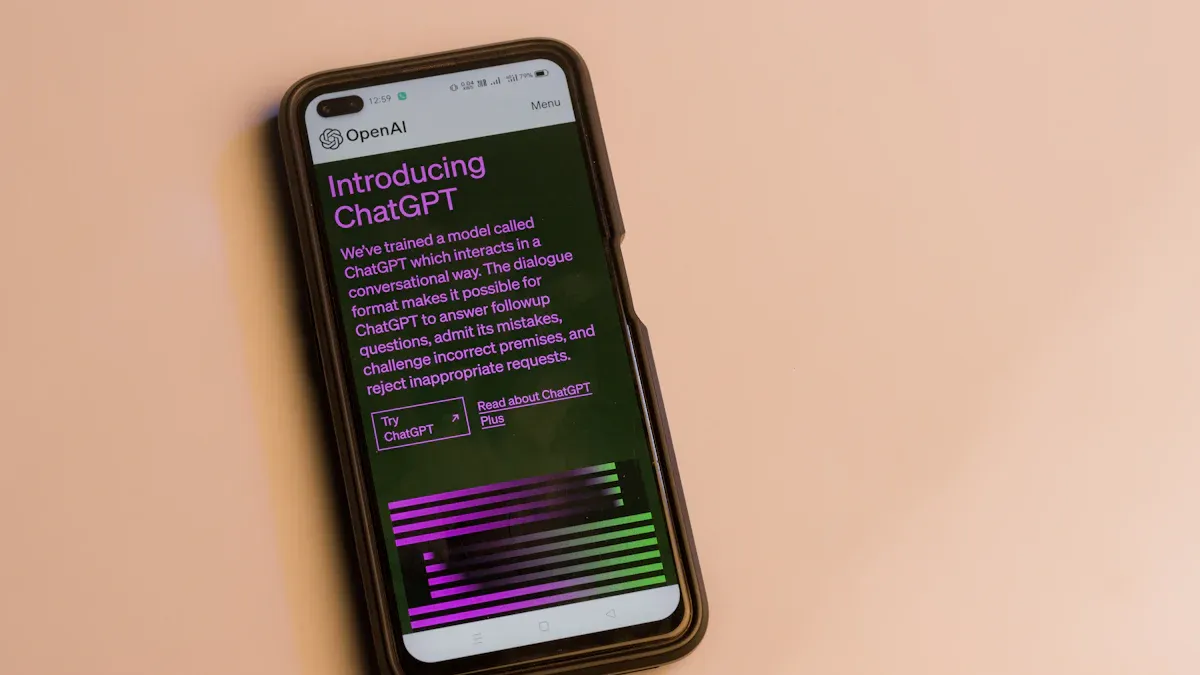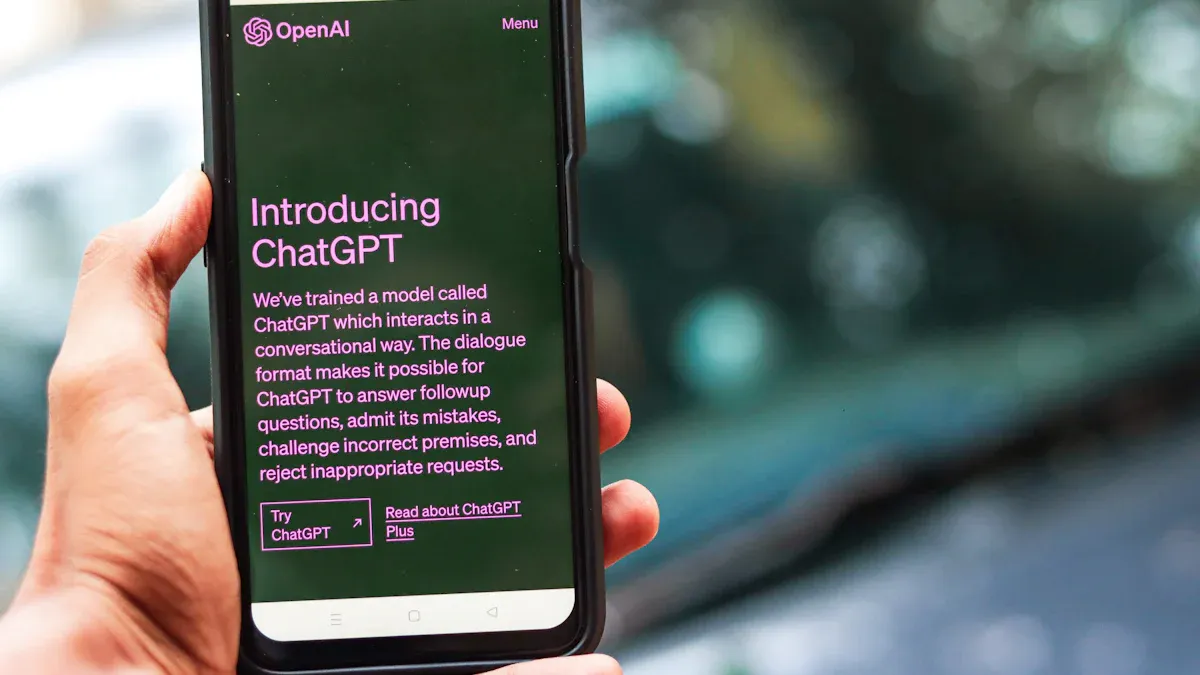How to Build a AI Virtual Receptionist in 5 Minutes

Imagine having a receptionist who never takes a break, handles calls perfectly, and improves customer satisfaction. That’s what an AI virtual receptionist can do for your business. Whether you run a small retail store or a healthcare clinic, this technology can transform how you manage customer interactions. For instance, a local clinic reduced missed appointments by 35% using AI, while a tech startup boosted qualified leads by 40% in just three months. With tools like Appointify AI, you can create your own in minutes. All it takes is the best AI voice receptionist prompt and a few simple steps.
Key Takeaways
AI receptionists work all day and night, so no calls are missed.
They cost less money than hiring full-time workers.
They can speak many languages, helping you reach more people.
Check how customers interact to make the AI work better.
Begin with simple tasks and add more as the AI improves.
Understanding AI Virtual Receptionists

What Is an AI Virtual Receptionist?
An AI virtual receptionist is a digital assistant designed to handle customer interactions, such as answering calls, scheduling appointments, and providing information. Unlike traditional receptionists, AI receptionists operate around the clock and can manage multiple tasks simultaneously. They rely on advanced technologies like artificial intelligence, natural language processing (NLP), and machine learning to understand and respond to customer inquiries effectively.
Here’s a quick comparison to help you understand the differences:
Feature | AI Receptionist | Human Receptionist |
|---|---|---|
Availability | 24/7 | Limited hours |
Languages | Multiple (20+ systems) | Usually one or a few |
Calls handled at once | Up to 100 | One at a time |
Cost | Lower over time | Higher (salary, benefits) |
While traditional receptionists excel at face-to-face interactions, AI receptionists shine in cost efficiency and scalability. They’re perfect for businesses looking to extend their reach and improve customer service without increasing overhead costs.
Key Features and Functionalities
AI virtual receptionists come packed with features that make them indispensable for modern businesses. Here are some of the most common functionalities:
24/7 Availability: Never miss a call or opportunity, even outside business hours.
Multilingual Support: Communicate with customers in multiple languages, expanding your global reach.
Smart Call Handling: Automatically route calls to the right department or person.
Efficient Appointment Booking: Allow customers to schedule or cancel appointments on their own.
Quick Question Answering: Provide instant responses to frequently asked questions.
These features are powered by technologies like NLP, which helps the AI understand customer queries, and machine learning, which enables it to improve over time. For example, the best AI voice receptionist prompt can guide the system to deliver accurate and engaging responses, enhancing the overall customer experience.
Benefits for Businesses
Using an AI virtual receptionist can transform your business operations. Here’s how:
Cost Savings: AI receptionists are far more affordable than hiring full-time staff. For instance, a human receptionist’s average salary is $45,760 per year, while AI solutions cost significantly less.
Improved Efficiency: They handle multiple tasks at once, such as managing up to 100 calls simultaneously. This reduces wait times and ensures no customer is left unattended.
Enhanced Customer Service: Quick responses and 24/7 availability boost customer satisfaction. Studies show that responding within five minutes makes you 21 times more likely to qualify leads.
Global Reach: Multilingual support allows you to connect with a diverse audience, breaking language barriers.
Whether you’re running a small business or a large corporation, an AI virtual receptionist can help you save money, improve efficiency, and deliver exceptional service.
Step-by-Step Guide to Building an AI Virtual Receptionist
Step 1: Choosing the Right Platform
Why Appointify AI Stands Out
When it comes to building an AI virtual receptionist, choosing the right platform is crucial. Appointify AI is a standout option for several reasons. It offers robust analytics tools that help you track performance and refine your AI receptionist over time. While platforms like Vapi AI are known for their ease of use, Appointify AI provides a more comprehensive solution for businesses that want advanced features. If you're looking for a platform that balances functionality with scalability, Appointify AI is a great choice.
Features to Look For
Not all platforms are created equal, so you’ll want to evaluate a few key factors before making your decision:
Identifying business needs: Think about the specific challenges you want to address, like missed calls or appointment scheduling.
Selecting the right technology: Look for platforms with strong AI capabilities, customization options, and an intuitive user experience.
Integration with existing systems: Ensure the platform works seamlessly with your telephony, CRM, or other internal tools.
By focusing on these features, you’ll set yourself up for success with a platform that meets your unique requirements.
Step 2: Defining Your Receptionist’s Role
Identifying Core Tasks
Before you dive into setup, it’s important to define what your AI receptionist will do. Start by identifying the essential tasks it should handle:
24/7 Availability: Make sure it’s always ready to assist customers.
Smart Call Handling: Route calls to the right department or person.
Efficient Appointment Booking: Automate scheduling and send reminders to reduce no-shows.
Quick Question Answering: Provide instant responses to FAQs.
These tasks form the backbone of your AI receptionist’s role, ensuring it delivers value from day one.
Creating a List of Common Queries
Next, think about the questions your customers ask most often. These could include inquiries about business hours, services, or pricing. For example, if you run a dental clinic, your receptionist might answer questions like, “What are your office hours?” or “Do you accept walk-ins?” By preparing a list of common queries, you’ll help your AI provide accurate and helpful responses.
Tip: Start small by focusing on the most frequent questions. You can always expand the list as your AI gets smarter.
Step 3: Crafting the Best AI Voice Receptionist Prompts
Examples of Effective Initial Ask Prompts
The prompts you create will shape how your AI interacts with customers. Here are some examples to get you started:
Greeting callers: “Thank you for calling [Your Company Name]. How can I help you today?”
Scheduling appointments: “Would you like to book an appointment? I can help you find a convenient time.”
Responding to FAQs: “Our business hours are Monday through Friday, 9 AM to 5 PM.”
These prompts set the tone for smooth and professional interactions.
Time Selection and Confirmation Prompts
When it comes to booking appointments, clarity is key. Use prompts like:
“I see that we have openings on Tuesday at 10 AM and Thursday at 3 PM. Which works best for you?”
“Your appointment is confirmed for [Date and Time]. Is there anything else I can assist you with?”
By crafting the best AI voice receptionist prompt, you’ll ensure your virtual assistant handles interactions efficiently and leaves a positive impression.
Step 4: Testing and Refining
Simulating Customer Interactions
Once your AI virtual receptionist is set up, it’s time to test how it handles real-world scenarios. Start by simulating common customer interactions. Pretend you’re a customer calling to ask about business hours, book an appointment, or inquire about services. This helps you see how well the AI responds to typical queries.
You can also involve your team in testing. Ask them to try different scenarios, including less common or tricky questions. For example, they could ask, “Can I reschedule my appointment for next week?” or “What’s the refund policy?” This ensures the AI can handle a wide range of situations.
Tip: Use metrics like response accuracy and call completion rates to evaluate performance. These insights will help you identify areas for improvement.
Identifying and Fixing Issues
During testing, you might notice some hiccups. Maybe the AI struggles with certain accents or doesn’t understand specific phrases. Don’t worry—this is normal. The key is to identify these issues early and refine the system.
Here’s how you can fix problems effectively:
Review customer interactions to pinpoint where the AI falls short.
Update the prompts or training data to address these gaps.
Test again to ensure the changes work as expected.
By refining the system, you’ll create a smoother experience for your customers. Remember, even the best ai voice receptionist prompt may need adjustments to fit your unique business needs.
Step 5: Deployment and Integration
Connecting to Your Website or Phone System
Now that your AI receptionist is ready, it’s time to connect it to your existing systems. Start by integrating it with your phone system so it can handle incoming calls. Most platforms, like Appointify AI, provide step-by-step instructions for this process. If your business relies on online bookings, link the AI to your website’s scheduling tool. This allows customers to book appointments directly through the AI.
Note: Ensure the AI has access to real-time updates, like changes to your schedule or contact list. This keeps everything running smoothly.
Ensuring Seamless Integration
Integration isn’t just about connecting systems—it’s about making sure they work together seamlessly. Test the AI in a live environment to confirm it interacts properly with your tools, such as your CRM or calendar. For example, when a customer books an appointment, the AI should automatically update your calendar without errors.
To maintain a seamless experience, monitor the system regularly. Look for any glitches or delays and address them promptly. A well-integrated AI receptionist not only improves efficiency but also enhances customer satisfaction.
Tips for Optimizing Your AI Virtual Receptionist
Refining Prompts for Better Performance
Analyzing Customer Interactions
To make your AI virtual receptionist more effective, start by analyzing how it interacts with customers. Review call logs and transcripts to identify patterns. Look for areas where the AI struggles, such as understanding specific phrases or accents. Analytics tools can help you track metrics like response accuracy and customer satisfaction. These insights will guide you in refining your prompts for better performance.
Updating Prompts Based on Feedback
Customer feedback is a goldmine for improving your AI. Use it to tweak your prompts and make them more relevant. For example, if customers often ask about appointment rescheduling, update your prompts to address this directly. Here’s a quick look at how feedback can shape your AI:
Prompt | Sample Response |
|---|---|
How can we improve customer retention? | Introduce loyalty programs and streamline support. |
What usability issues do customers face? | Simplify setup instructions and offer tutorials. |
By iterating on your prompts, you’ll ensure the AI delivers responses that align with customer needs.
Monitoring and Improving Performance
Using Analytics to Track Success
Analytics tools are your best friend when it comes to tracking performance. Monitor metrics like response times, customer satisfaction scores, and the AI’s ability to handle multiple inquiries. For example:
Response Accuracy: Measures how well the AI understands and answers questions.
Customer Happiness: Tracks overall satisfaction with the AI’s performance.
These metrics will help you pinpoint what’s working and what needs improvement.
Identifying Areas for Improvement
Use the data from analytics tools to identify weak spots. For instance, if response times are slow, you might need to optimize the AI’s processing speed. Logged interactions can also reveal recurring issues, like difficulty understanding certain queries. Addressing these areas will make your AI more reliable and efficient.
Maintaining a Human-Friendly Approach
Using a Conversational Tone
Your AI should sound friendly and approachable. Use a conversational tone to make interactions feel natural. For example, instead of saying, “Your request has been processed,” try, “Got it! I’ve taken care of that for you.” This small change can make a big difference in how customers perceive your service.
Avoiding Robotic Responses
Nobody likes talking to a robot. Make sure your AI uses personalized scripts and empathetic language. For instance, if a customer seems frustrated, the AI could say, “I’m here to help. Let’s figure this out together.” Adding a “talk to a human” option also ensures customers feel valued.
By focusing on these strategies, you’ll create an AI virtual receptionist that’s not only efficient but also customer-friendly.
Setting up an AI virtual receptionist is easier than you might think. With platforms like Appointify AI, you can create a system that works 24/7, speaks multiple languages, and handles calls efficiently. Here’s why it’s worth your time:
Cost Savings: AI receptionists are more affordable than hiring full-time staff.
Data Insights: They provide valuable customer data to help you make smarter decisions.
Scalability: These systems grow with your business, adapting to your needs.
To ensure long-term success, start small by focusing on simple tasks like answering FAQs. Regularly update your AI’s knowledge and monitor its performance to keep it running smoothly. Ready to transform your customer service? Start building your AI receptionist today and see the difference it makes!
FAQ
How much time does it really take to set up an AI virtual receptionist?
You can set it up in just 5 minutes! Platforms like Appointify AI simplify the process with user-friendly tools and step-by-step instructions. You’ll be up and running before you know it. ⏱️
Do I need technical skills to create an AI receptionist?
Not at all! Most platforms are designed for non-technical users. They offer drag-and-drop interfaces and pre-built templates. If you can follow simple instructions, you’re good to go. 💻
Can I customize the AI receptionist to match my business needs?
Absolutely! You can tailor the AI to handle specific tasks, answer common questions, and even use your preferred tone of voice. Customization ensures it aligns perfectly with your brand. 🎨
Will the AI receptionist work with my existing systems?
Yes, most platforms integrate seamlessly with tools like CRMs, calendars, and phone systems. Just follow the integration steps provided by the platform to ensure everything works smoothly. 🔗
What if the AI doesn’t understand a customer’s question?
Don’t worry! AI systems learn and improve over time. You can refine prompts and update training data to handle tricky queries better. Plus, you can always offer a “talk to a human” option. 🤖➡️👩💻
See Also
Transforming Appointment Scheduling With AI Voice Chat Technology
Creating Custom Appointment Booking With Voice AI Chatbot App
Enhancing Employee Communication Through AI Voice Call Features
Creating Character Voices Using AI Without Any Coding Skills

